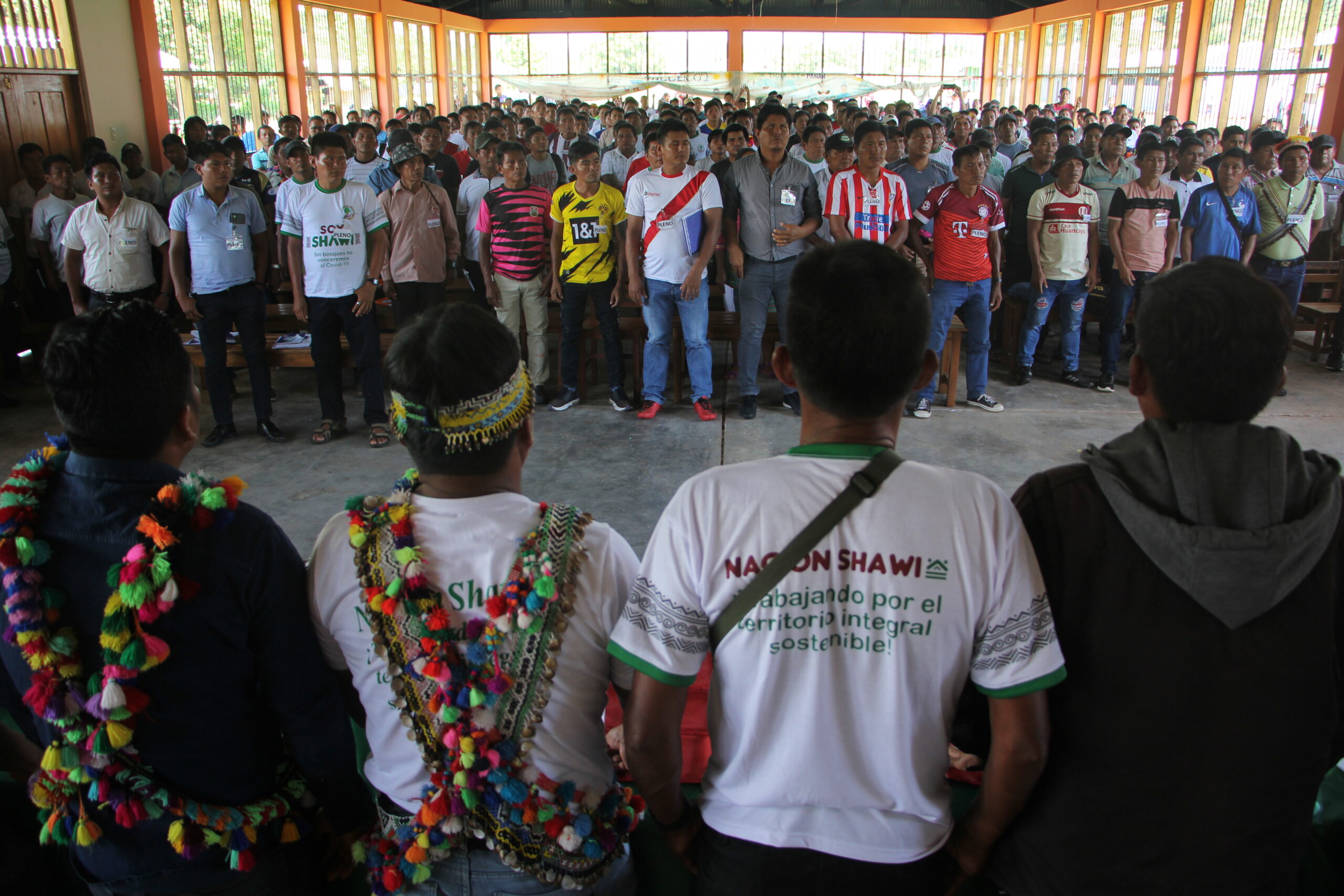In a Peru dominated by mafias, the coloniality of power is accelerating the anti-Amazonian and anti-national offensive. In the Amazon, the “colonial conquest” continues, leading to a flood of aggressions such as colonization, land subdivision, illegal logging, oil palm plantations, monocultures, roads, mining concessions, illegal gold mining, untouchable Mennonite colonies, and the expansion of drug trafficking. If the State persists in its racist view of the Amazon as an “empty” and “conquerable” territory only to be profited from, then the inevitable Indigenous response to defend their rights will be to escalate their efforts towards territorial control and self-governance.
The autonomies or territorial self-governments of the peoples and nations in the Peruvian Amazon constitute an active and powerful process, reflected in a variety of experiences. The most advanced examples include the Autonomous Territorial Government of the Wampís Nation (GTANW), the Awajún Autonomous Territorial Government (GTAA), and the Federation of the Achuar Nationality of Peru (FENAP). At the intermediate level are those promoted by the Regional Coordinating Body of Indigenous Peoples of Datem and Alto Amazonas in the northeastern region: the Shawi, Kandozi, Chapra, Kukama, Inka del Pastaza, and Shipibo (Coshicox). Finally, in an initial stage are the Ese Eja, Arakbut, and Matsiguenka.
Although “autonomy” or “self-government” have been the most commonly used terms in the last two decades, in reality, this designation continues and matures a much older aspiration of Indigenous peoples. This aspiration has been expressed in the intense territorial struggles and, for illustrative purposes, the experience of the Matsés people during the 1970s. The Matsés avoided the division of their land into communal parcels and maintained their collective integrity as a people under a single large “communal” title of 452,735 hectares, which they later defended against various state impositions.
It is in the context of this long process that the second meeting between AIDESEP and its nine associated regional organizations (which represent 109 federations and 2,400 communities), along with the autonomous territorial governments and the Coordinating Body of Indigenous Organizations of the Amazon Basin (COICA), took place from October 6 to 7, 2023. During this meeting, prior agreements were deepened, and three historic resolutions were adopted concerning the expansion of autonomy of 51 Amazonian Indigenous peoples, through the Minga for Territoriality, Land Titling, and Self-Government for Indigenous Peoples, which established an action and implementation plan.
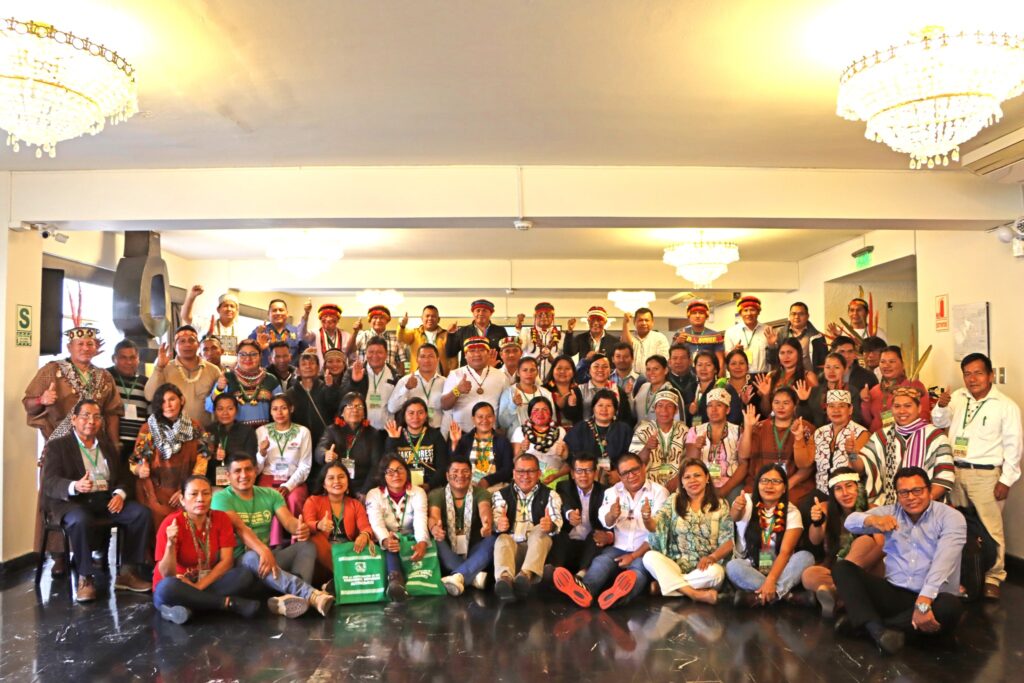
Global interlearning
This is not an isolated, unique, or marginal process; it extends across Abya Yala, Africa, Asia-Pacific, and even state-centric Europe. The demand for and exercise of a different form of public authority—collective, social, and non-state—both de facto and, at times, de jure, runs parallel to the broader crisis of civilization, climate catastrophe, and the disintegration of Euro state-centrism. These social responses pave the way for rural alternatives that also influence urban spaces.
The Peruvian Amazon is embedded in this global interlearning of autonomizing processes. Valuable lessons have been drawn from reinvigorating this path. In the 1980s and 1990s, the Inuit Nation’s self-government in the Arctic demonstrated its “viability” in Greenland and Nunavut, even when challenged by powerful states like Denmark and Canada. Insights have also been gained from the territorial reconstitution, governance, law, and autonomous economy led by the Regional Indigenous Council of Cauca (CRIC) in Colombia, as well as from the Indigenous defense and autonomous governance of the Ka’apor people, who have resisted violence from loggers and miners amidst the Brazilian state’s inability to control these actors.
The Purépecha succeeded in having their local authorities recognized by the government and had control of the municipal budget transferred to them.
Another well-known example of autonomous governance is the innovation of the Purépecha people in Cherán Keri, Michoacán, who eradicated logging mafias and political-state corruption through territorial self-regulation. The Purépecha closed off their municipality, expelled all political parties, and restored their community to a self-governing structure to manage their forests, water, education, and industry. In doing so, they succeeded in having their local authorities recognized by the government and had control of the municipal budget transferred to them.
We are witnessing a new level of recognition, as the United Nations has designated self-determination and autonomous governance as the central theme for the 2024 session of the Permanent Forum on Indigenous Issues. The report from the United Nations Economic and Social Council (ECOSOC) for this important discussion synthesizes various processes and outlines guiding principles for implementation. It also encompasses urban experiences, whether involving Indigenous populations or not, such as the Acapatzingo Housing Cooperative in Mexico City and the organized communes surrounding the Kitu Kara people on the outskirts of Quito.
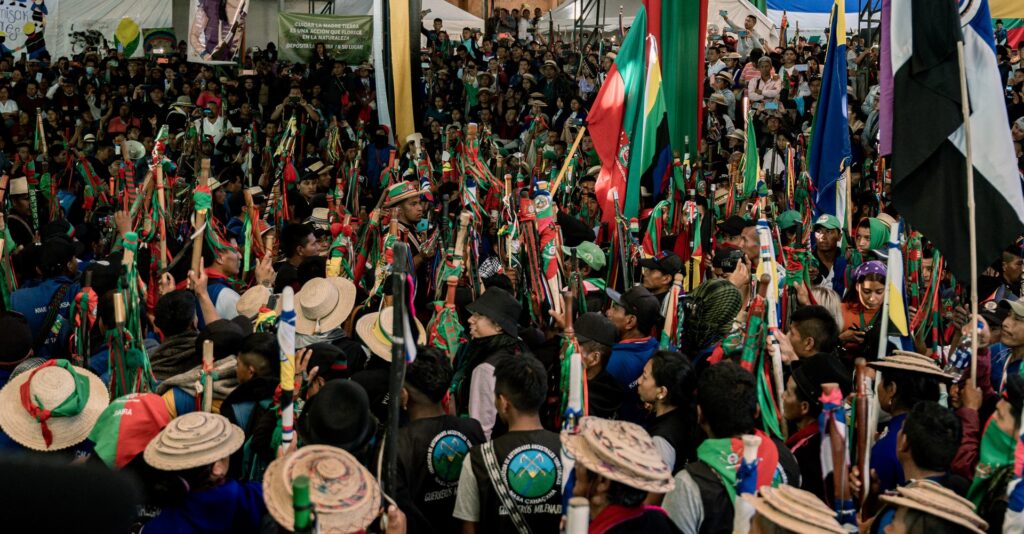
When extractivist racism drives self-government
Autonomy is intrinsic to the cultural pride and history of each Amazonian community. While this trend (and option) faces pressures and distractions, it remains latent and surfaces with fluctuations, depending on social processes. Autonomy emerges when the State undermines and obstructs community land titling. In Peru, this movement began to gain momentum in 1993, when the Fujimori dictatorship abolished constitutional rights associated with these territories, which were considered “inalienable and unseizable.” The situation worsened as subsequent governments maintained an extractivist regime characterized by divisionism and repression.
Demands for autonomy resurfaced when communal titles excluded ancestral territories and misrepresented them as “freely available.” The push for autonomy intensified amid frustrations with communal reserves, where the State has been the primary violator of their special legal regime. The need for autonomy also increased due to the racist violence perpetrated by Sendero Luminoso and the Túpac Amaru Revolutionary Movement (MRTA), which compelled communities to establish their own autonomous indigenous defenses. Today, this struggle continues against extractivist violence linked to logging, hydrocarbons, mining, monocultures, and drug trafficking, compounded by the impunity surrounding the massacre of 30 indigenous land defenders.
In response to extractivist aggression and the farce of prior consultations, it is no coincidence that indigenous autonomies assert that decisions should be made by the collective authority of their communities and nations themselves.
Through its oppression and tolerance of extractivist violence, the Peruvian state is not only fostering the will for autonomy but also amplifying it through state disintegration, persistent corruption, neglect of the Amazonian regions, repression of communities, and the ineffectiveness of its officials. As the nation-state faces deinstitutionalization and the coloniality of racist power becomes increasingly extreme, each Amazonian community, at its own pace and in its own way, could begin to take charge of its survival, forests, and jungles.
In this context, in response to extractivist aggression and the farce of prior consultations that exclude community consent, it is no coincidence that indigenous autonomies assert that decisions should be made by the collective authority of their communities and nations themselves. Indeed, Article 7 of ILO Convention 169 affirms their right to decide and control their own development, from defending their forests to mobilizing against gold mining and hydrocarbon contamination that threaten their lives.
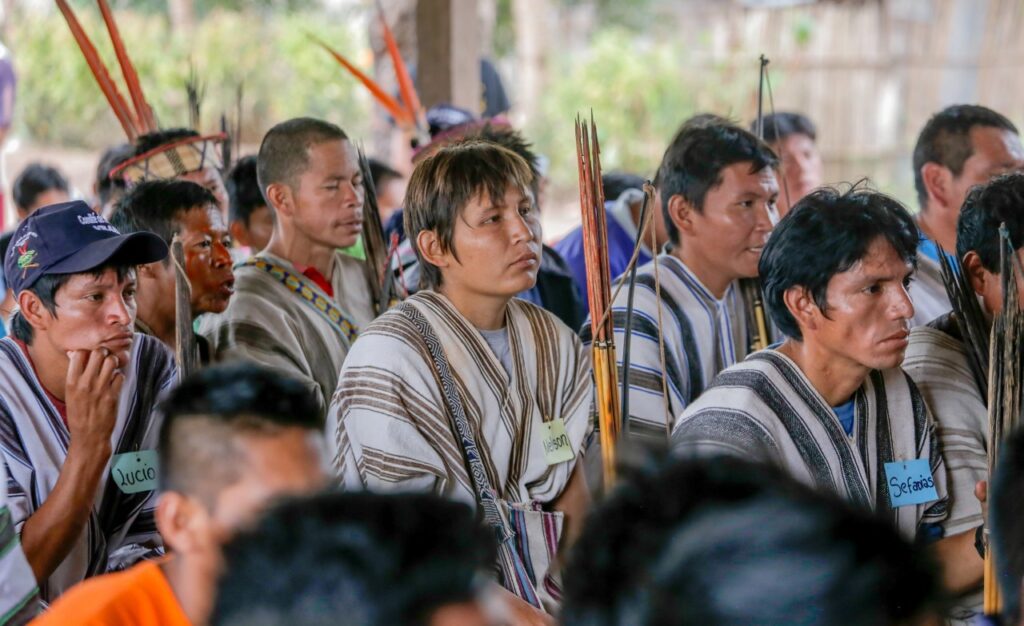
Forests and peoples forever: no secessionism
When we discuss autonomies, we refer to self-governance within their sovereign territories with three key objectives: to monitor, protect, defend, and manage their lands; to ensure the existence of forests and peoples in perpetuity; and to make decisions in accordance with their culture, history, and collective processes. This has absolutely nothing to do with any form of separatism or secessionism because Indigenous peoples have accepted Article 46 of the United Nations Declaration on the Rights of Indigenous Peoples, which states: “Nothing shall be interpreted as undermining or compromising the territorial integrity or political unity of States.”
The misleading argument of supposed secessionism stems from ignorance, misinformation, prejudice, or is simply a diversionary tactic employed by certain interest groups associated with the extractivist dictatorship. For clarity, the Autonomous Territorial Government of the Wampís Nation (GTANW) has presented a protocol for engagement with the Peruvian State. This document outlines a relationship based on mutual respect between Wampís citizens and the Peruvian State, situated within the constitutional and legislative framework, and seeks cooperation and joint development of policies, plans, and activities.
In Ecuador, the Kitu Kara self-government faced an internal debate between two extreme positions: on one hand, submission to the State’s agenda, and on the other, complete detachment from the State. Following this community discussion, the autonomy established its own framework called “In, With, or Against the State,” always rooted in their territorial self-governance. Depending on the circumstances, they will collaborate with the State, work jointly, and, when necessary, take action against anything that threatens their rights.
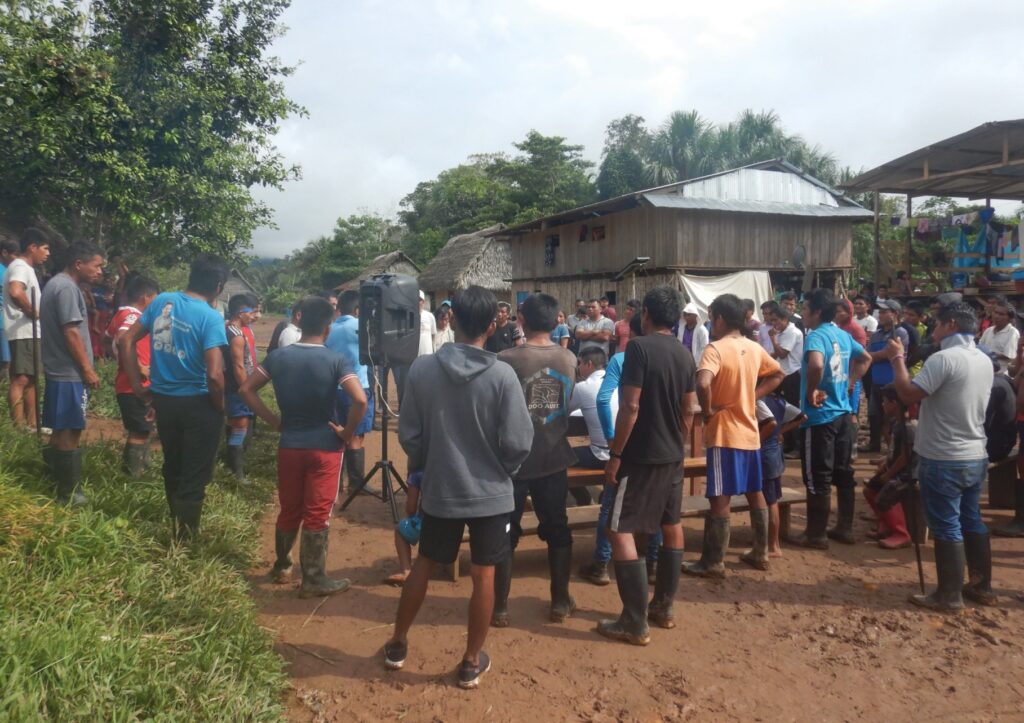
Territoriality, ownership, and self-government
Although an autonomy process develops at the pace of each community, we can identify three overlapping dimensions. It begins with the recovery of memory and knowledge regarding ancestral territorial occupation in, for example,traditional areas of settlement, migration routes, cemeteries, hunting, fishing, and gathering grounds, which must be agreed upon with neighboring communities. Non-Indigenous settlements, concessions, and protected areas are documented for the development of future protocols of interaction and to uphold Indigenous governance.
Next, a dossier is prepared, providing historical, ecological, and legal grounds, as well as territorial maps and zoning. This dossier is submitted to state authorities to ensure it is respected and to prevent the approval of extractive operations. In this regard, Articles 13 and 14 of ILO Convention 169 describe comprehensive ancestral territoriality as the regional habitat occupied (or otherwise used) by the communities, and recognize their right to access lands that may not be exclusively occupied by them but have traditionally been used for their activities and subsistence.
In a third stage, a Statute of Self-Government is created, which consolidates various elements. This process continues with the adoption of resolutions or ordinances by the territorial government to support statutory and normative development.
The legal recognition of Indigenous peoples has not respected the collective institutional framework unique to each community. Instead, it has fragmented their representation into multiple communal entities and subjected them to the same procedures as any urban civil association. As an alternative, there has been a proposal to establish a special registry under the category of “Indigenous Peoples” within the National Superintendency of Public Registries of Peru (SUNARP). In this context, the Regional Government of Loreto recognized the existence of 22 Indigenous peoples. Although this ordinance was unfortunately blocked by the Ministry of Culture, it could be revisited in the future, accompanied by the Autonomy Bill, to ensure that the State fulfills its obligation to recognize Indigenous peoples as “subjects of rights.”
Finally, a Statute of Self-Government is created (as in the cases of the GTANW and GTAA), which consolidates various elements: the history of each people, their worldview, territorial boundaries, and the structure of their collective authority; regulations on forests, biodiversity, education, health, and their own justice systems; participation of elders, women, and youth; and the relationship with non-Indigenous settlements and state-designated protected areas. This process continues with the adoption of resolutions or ordinances by the territorial government to support statutory and normative development.
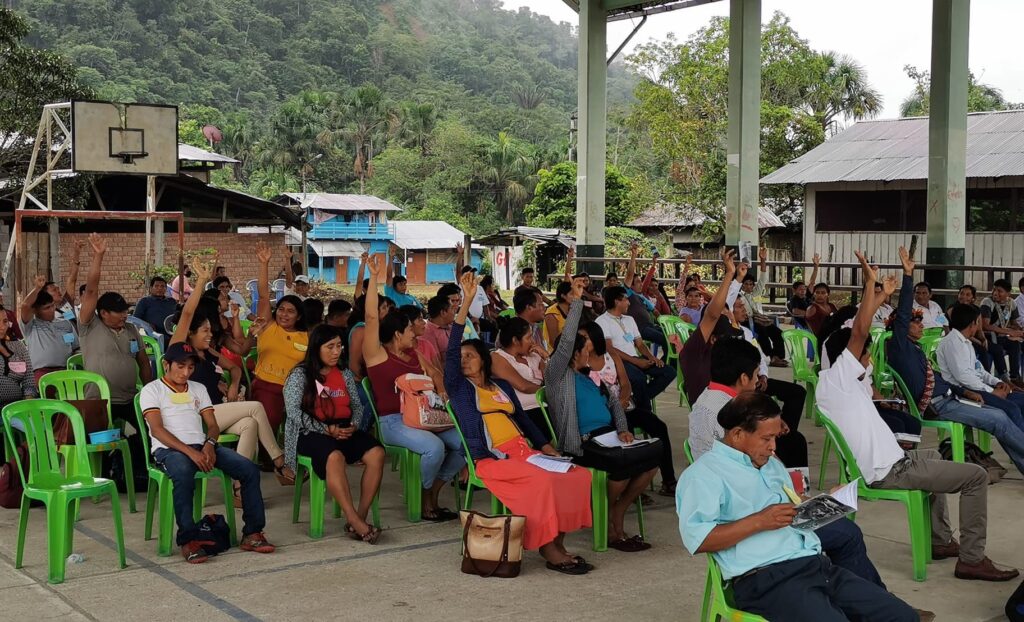
Self-Government, plurinationality, and decoloniality of power
There is a close relationship between Indigenous autonomies and changes in society and the “one-nation” State. Recognizing the comprehensive territoriality of land, the legal and political status of Indigenous peoples, and respecting the authority of their self-government would require acknowledging that Peru is not a “one-nation” society. On the contrary, it is an ancient plurinational society (not merely a multicultural one) that should reimagine itself as a Plurinational State based on this plurinational social foundation.
The examples of Bolivia, Ecuador, Venezuela, Canada, and New Zealand demonstrate that this is both essential and feasible. However, they also reveal that it is not enough to enshrine it in a constitution, as the coloniality of power shapes social perceptions and perpetuates various other mechanisms of oppression. Despite this, the persistence of Indigenous autonomy demands that Indigenous peoples have the capacity to exercise self-government primarily “in practice” and, in parallel, “by law.” The development of territorial self-governments can be further strengthened through contributions from critical social theories related to the decoloniality of power and knowledge.
Autonomy processes may be repressed, diverted, or even temporarily halted or defeated, but they are here to stay. They will continue to emerge, time and time again, and there is no turning back.
A first version was published in the magazine “Comunes” in March 2024.
Roberto Espinoza is a Peruvian sociologist who collaborates with indigenous organizations and is a member of the Decoloniality and Self-Government Network. You can access the network here: https://www.facebook.com/descolonialidad
